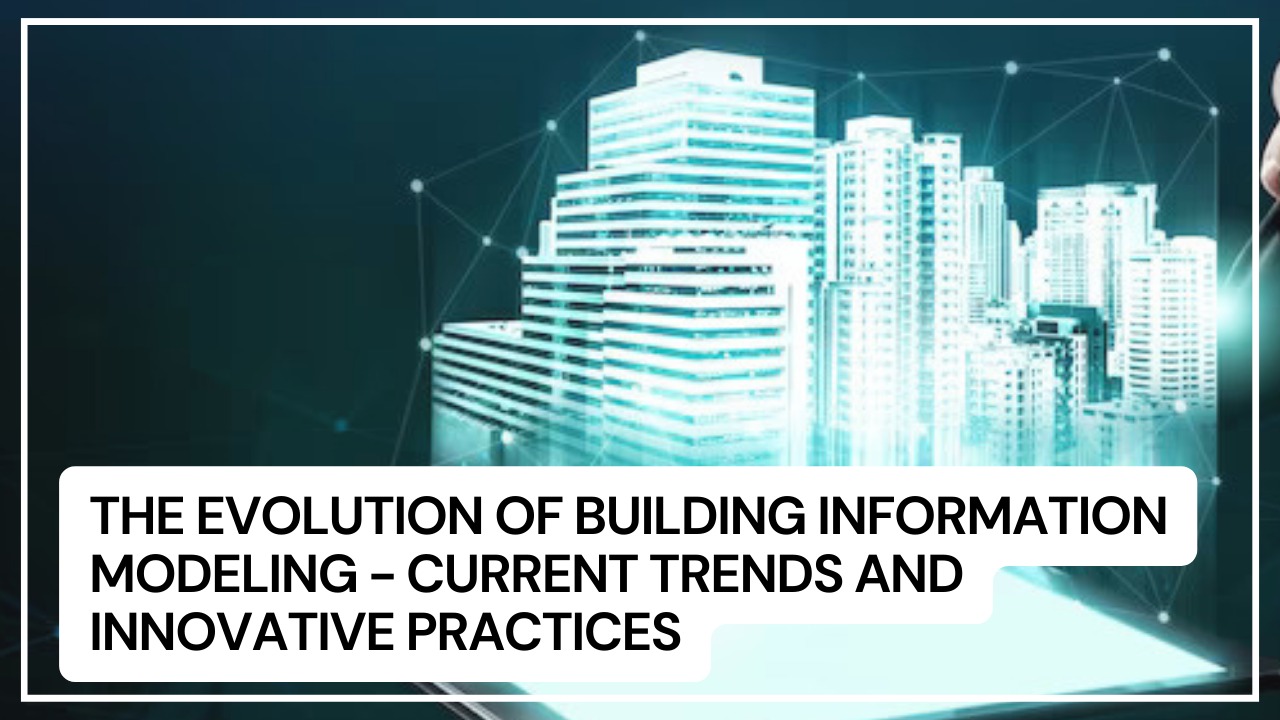
The Evolution of Building Information Modeling - Current Trends and Innovative Practices
Building Information Modeling (BIM) has fundamentally transformed the landscape of the construction industry. From its inception to the present day, BIM has evolved significantly, incorporating new technologies, methodologies, and best practices. In this article, we explore the evolution of BIM, highlighting current trends and innovative practices shaping the future of construction.
Understanding the Evolution of BIM
Early Beginnings
BIM traces its roots back to the 1970s when architects and engineers began using rudimentary computer-aided design (CAD) software to create digital representations of building components. These early systems paved the way for more sophisticated BIM platforms by laying the groundwork for 3D modelling and visualisation.
Rise of Parametric Modeling
The emergence of parametric modelling in the 1990s marked a significant milestone in the evolution of BIM. Parametric modelling enabled designers to establish relationships between different elements of a building, allowing for dynamic, data-driven design changes. This shift towards parametric modelling laid the foundation for the intelligent, information-rich models that define modern BIM.
Current Trends in BIM
Integration of Virtual Reality (VR) and Augmented Reality (AR)
One of the most prominent trends in contemporary BIM is the integration of virtual reality (VR) and augmented reality (AR) technologies. VR and AR allow stakeholders to visualise and interact with BIM models in immersive, lifelike environments. This enhanced visualisation capability streamlines the design review process, facilitates stakeholder engagement, and improves decision-making throughout the project lifecycle.
Cloud-Based Collaboration
The advent of cloud computing has revolutionised collaboration in the construction industry. Cloud-based BIM platforms enable real-time collaboration and data sharing among project teams, regardless of geographical location. This accessibility fosters greater communication, enhances project coordination, and reduces the likelihood of errors or discrepancies between stakeholders.
Sustainability and Green Building
As sustainability becomes increasingly integral to modern construction practices, BIM plays a pivotal role in facilitating sustainable design and construction. BIM software offers powerful analysis tools that evaluate the environmental performance of buildings, allowing designers to optimise energy efficiency, reduce carbon emissions, and minimise environmental impact. By integrating sustainability principles into BIM workflows, construction professionals can create healthier, more environmentally responsible built environments.
Innovative Practices Shaping the Future of BIM
Generative Design
Generative design represents a cutting-edge approach to architectural and engineering problem-solving. By leveraging algorithms and computational methods, generative design software explores numerous design permutations based on predefined parameters and objectives. This iterative process generates innovative, optimised solutions that might otherwise remain undiscovered through traditional design methods. Incorporating generative design into BIM workflows empowers designers to explore a broader range of possibilities and unlock new opportunities for creativity and efficiency.
Digital Twin Technology
The concept of the digital twin—a virtual replica of a physical asset—has gained traction across various industries, including construction. Digital twins enable real-time monitoring, analysis, and optimization of building performance throughout its lifecycle. By integrating BIM data with sensor data from IoT (Internet of Things) devices, digital twins provide invaluable insights into building operations, maintenance needs, and occupant behaviour. This holistic understanding enables stakeholders to make informed decisions, enhance operational efficiency, and prolong the lifespan of building assets.
Conclusion
The evolution of Building Information Modeling reflects the ongoing transformation of the construction industry. From its humble beginnings as a 3D modelling tool to its current status as a comprehensive digital platform, BIM continues to evolve in response to technological advancements, industry trends, and changing market demands. By embracing current trends and innovative practices, construction professionals can harness the full potential of BIM to drive efficiency, collaboration, and sustainability across the built environment. As we look to the future, the continued integration of emerging technologies and the adoption of best practices will undoubtedly shape the next chapter in the evolution of BIM.

